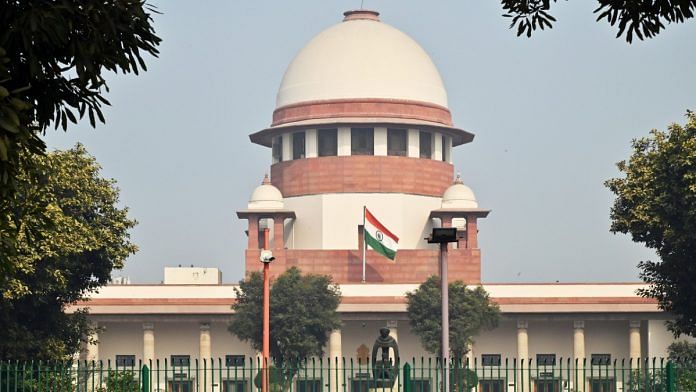New Delhi: From doing away with the need for the Judicial Magistrate First Class (JMFC) to check if the living will is executed voluntarily to simplifying the composition of the medical boards determining whether life-support systems can be withdrawn, the Supreme Court has issued simplified the procedures for passive euthanasia in India.
On 24 January, a bench comprising Justices K. M. Joseph, Ajay Rastogi, Aniruddha Bose, Hrishikesh Roy and C. T. Ravikumar agreed to make the process less cumbersome by modifying the existing guidelines it laid down in 2018 on living wills, or advance directives. The order came in public domain on Thursday.
A living will, or an advance directive, is a document that a person can execute in advance, explaining his/her wish about withholding or withdrawing medical treatment in case of terminal illness and is undergoing prolonged medical treatment with no chances of recovery and cure.
In March 2018, a Constitution bench allowed ‘passive euthanasia’, thereby facilitating people to create an advanced medical directive for a future situation in which they reach a point of no return. The apex court had recognised the right to die with dignity as a fundamental right and laid down guidelines for terminally-ill patients to enforce the right.
Active euthanasia is a scenario where medical professionals deliberately take an action that causes a terminally ill patient’s death. One of the procedures includes administering lethal compounds for ending the patient’s life.
In passive euthanasia, medical professionals let the patient die by stopping procedures that can prolong life, such as putting off critical support systems.
The Indian Society for Critical Care filed an application in July 2019, requesting the top court to form a Constitution bench for modifying some of the guidelines prescribed in the 2018 judgment.
The Society had asserted that the current procedure for terminally ill patients was extremely cumbersome and required streamlining. For instance, under the old guidelines, the advance directive was supposed to be signed and executed in the presence of two witnesses, and countersigned by the JMFC. The countersignature has now been substituted with attestation before a notary or gazetted officer.
Further, the old guidelines required that the JMFC needs to record that “the document has been executed voluntarily and without any coercion or inducement or compulsion and with full understanding of all the relevant information and consequences”. The notary or a gazetted officer can record it now, as per the modified guidelines.
Also Read: What is ‘living will’ and what are the Supreme Court’s hearings on passive euthanasia about
Composition of medical boards changed
When a patient becomes terminally ill and is undergoing prolonged medical treatment with no hope of recovery and cure, and does not have decision-making capacity, the attending physician has to ascertain the genuineness and authenticity of the advance directive.
The hospital where the patient is admitted to forms a primary medical board consisting of the physician and at least two subject experts with at least five-year experience.
The old guidelines required this board to have the head of the department concerned, and at least three experts from the domain of general medicine, cardiology, neurology, nephrology, psychiatry or oncology with experience in critical care and with overall standing in the medical profession of at least 20 years. This was argued as being unimplementable before the Supreme Court, leading to the board being simplified.
From now on, this board will visit the patient in the presence of guardian/close relative and form an opinion preferably within 48 hours of the case being referred to it whether to certify or not to certify carrying out the instructions of withdrawal or refusal of medical treatment.
Once the medical board certifies that the advance directive needs to be carried out, the hospital will form a secondary board comprising one registered medical practitioner nominated by the Chief Medical Officer (CMO) of the district and at least two subject experts with at least five-year experience of the concerned specialty who were not part of the primary board.
The old guidelines required the collector to constitute this second board, which was to have the CMO as the chairman and three medical experts with experience in critical care and with at least 20-year experience.
The preferable 48-hour time limit has now been added to the secondary board. The secondary board has to ascertain the patient’s wishes if he/she is in a position to communicate and is capable of understanding the consequences of withdrawing medical treatment. If the patient is unable to do so, then the consent of the nominated people in the advance directive needs to be taken.
The hospital where the patient is admitted needs to then convey the decisions of the primary and secondary boards and the consent of the people named in the advance directive to the JMFC before giving effect to the decision to withdraw the medical treatment given to the patient.
In the old guidelines, the JMFC was required to visit the patient at the earliest, after this communication, and authorise the implementation of the boards’s decision after examining all aspects. However, this requirement for the JMFC’s visit has now been removed.
(Edited by Tony Rai)
Also Read: What’s Memorandum of Procedure & why it’s at heart of govt-SC tussle over judges’ appointments






